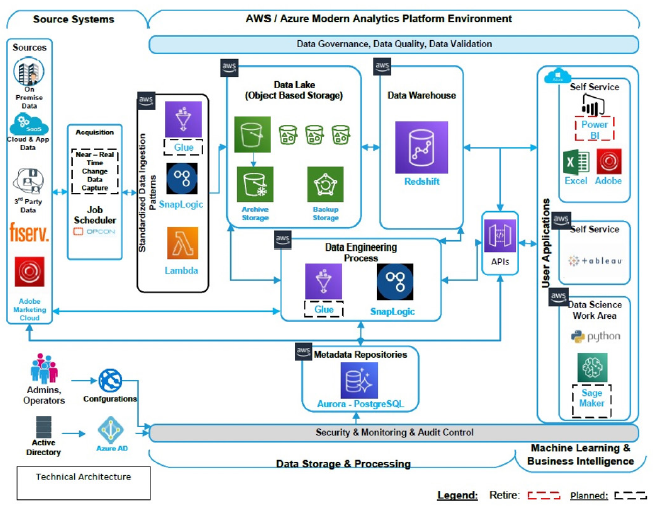Leveraging EXL and AWS for reducing overall costs for infrastructure & operations
The Customer
Digital Federal Credit Union (DCU) is a not-for-profit financial cooperative owned by and operated for its members. DCU was chartered in October of 1979. Since then, DCU has been chosen as the credit union for more than 700 companies and organizations. DCU serves more than 1 million members and their families across all 50 states.
The Challenge
Business teams within the credit union sought to make data-driven decisions based on customer insights, purchasing trends, fraud collections, operation efficiencies, and more. However, legacy data warehousing and integration technology required too many developer resources to deliver real-time information at scale from a variety of sources such as the internet, ATMs, telephones, and the credit union’s 23 branches.
Without real-time access to data, business managers relied on time-consuming and manual copying, pasting and merging data from multiple systems into Excel spreadsheets for analysis. The data was stale by the time the data was ready to be analyzed, or worse, resulted in inaccurate information.
The Solution
To eliminate the costly and ongoing maintenance of their existing on-premises systems, DCU’s IT team transitioned to a completely cloud-based infrastructure, and moved their on-premises data integration, reporting solutions and data to the cloud. The evaluation requirements in selecting an integration platform included support for their serverless strategy on a container-based AWS Fargate architecture, application integration, ETL, and robust security, as the credit union manages their members’ private information. The team chose SnapLogic as their integration platform of choice as other integration solutions did not support their serverless design principle or required more labor-intensive building of data pipelines -- a costly resource to maintain.
In addition, DCU worked with EXL to define their approach to data strategy and governance for a modern cloud-based data platform, and leverage a data lake (S3) for advanced analytics and the development of AI/ML models. Metadata-driven processes for data ingestion were implemented that minimized manual efforts, and privacy code settings (IAM Security) allowed information to be automatically shared across different platforms based on the sensitivity of the data. The team also enabled corporate-level KPIs by creating an organization-wide dashboard for sharing progress toward goals and successes.
The Solution Architecture

The Business Result
Within six months, the IT team migrated 30 months of data consisting of over 5.8 billion documents into Amazon Redshift for analysis. The data is refreshed each night, enabling the business teams to access up-to-date information on which to base decisions. In addition, each sales executive has a self-serve dashboard delivering them the insights they need to better support their clients.
